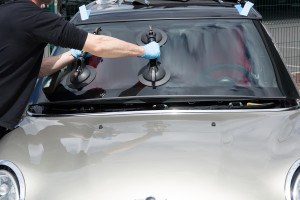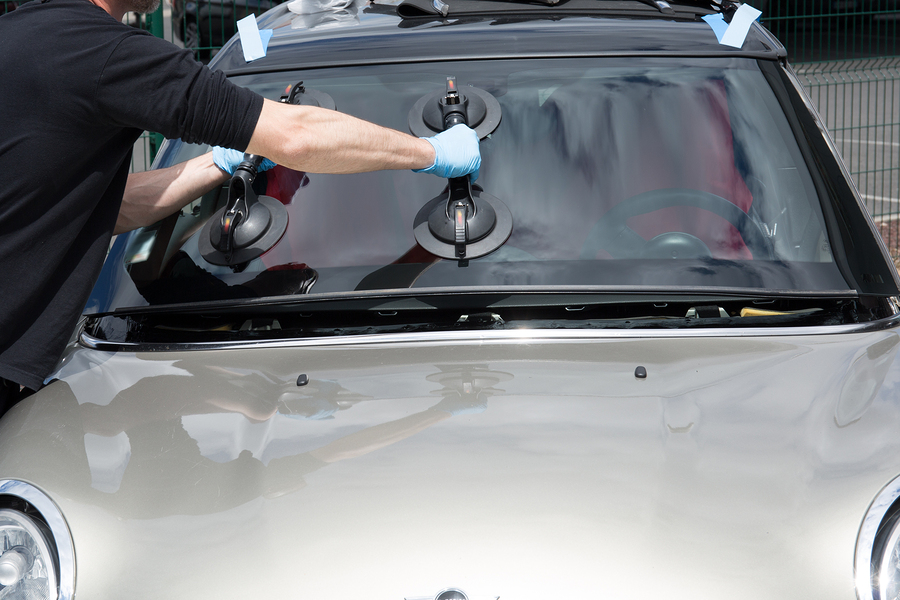Today’s windshields are poised to start thinking for themselves – but at what cost?
When windshields were introduced in the early 1900s, they were not sophisticated devices. In fact, they were optional. Motorists got to choose whether their new car would come with or without a windshield. The nicest ones had hinges so that if the glass got dirty, the driver could simply fold it down.
As driving speeds increased, windshields transitioned from optional to necessary, and 100 years of innovation ensued. Motorists eventually stopped using hinged glass after Mary Anderson invented wiper blades, and when Édouard Bénédictus discovered laminated glass in a lab accident, the stage was set for safety glass in windshields. Today, windshields are poised to start thinking for themselves.
Advanced driver assistance systems: making windshields smarter
Advanced driver assistance systems (ADAS) may be found in any part of a vehicle, but the windshield offers the best vantage point for many functions. Calibrated glass can initiate emergency braking, parking assistance, pedestrian detection, adaptive cruise control and more.
Basic sensors already alert drivers of a passing vehicle entering a blind spot. Other ADAS applications include functions such as lane-departure warning alerts, auto correction to keep wheels inside lane markers, and collision avoidance.
Clearly there are safety benefits in these innovations. There are also new questions, especially where calibration is concerned:
- Smart windshield calibration requires special training and specialized equipment. How will this affect the timing and availability of repair?
- When a driver files a claim, how will smart windshields affect the cost an insurer pays for glass replacement?
- If sensors and cameras are improperly calibrated, they may not work. What unforeseen risks and liabilities may follow?
These questions carry some urgency as calibrated windshields will soon become a standard vehicle feature. By 2020, these types of sensors and mini cameras will become standard safety features no longer exclusive to luxury brands.
Last fall, 10 automakers agreed to install automatic braking systems to help prevent collisions, said New York Times contributor Bill Vlasic. They didn’t agree to a timeframe, so regulators may still push to make ADAS required by law, “just as airbags were mandated a generation ago,” said Vlasic.
Before the regulatory landscape changes, it’s wise for insurers to ask the critical questions.
How will calibration affect windshield repair costs?
An auto glass or collision repair shop that’s contracted to replace calibrated glass may need to hire out to perform the re-calibration or even the entire glass repair. There’s an inevitable delay built into that equation.
If the shop opts to acquire the scanners and training to perform the repair in-house, it faces a significant investment. According to Bill George, a director at NSG Pilkington, there is no scanner that re-calibrates all vehicle models and makes – in fact many require their own unique scanners. These scanners are expensive (several thousand dollars each), so it’s easy to see how many shops simply could not afford to service calibrated glass for a wide range of vehicle makes and models.
How will it impact customer experience?
A shop that outsources re-calibration would need to educate its team on the policies surrounding those services for multiple manufacturers, and schedule the re-calibration carefully to expedite the repair. Even so, customers could face longer wait times.
If shops fail to carefully check each vehicle manufacturer’s procedures before writing estimates, and unexpected requirements arise later, it could have a big impact on work efficiency, repair times and customer satisfaction.
How will it affect premiums and other costs for insurers?
These investments will impact the cost of repair. The question is, who will bear the brunt of that cost? Will it be the policyholder, manufacturer, repair shop or insurer? It’s possible that in some cases, windshield replacement could be more cost effective than re-calibration.
Could ADAS vendors be liable for malfunction?
Yes, potentially. If the system malfunctions, it could interfere with a vehicle’s normal operation and drivability. Alternatively, if a driver has become reliant on sensor-facilitated features, and those features fail to work as expected and an accident ensues, who is at fault? While the answers to liability questions are still unknown, the legal implications will emerge and evolve over time.
More clarity needed
While ADAS offer many benefits and will likely become a standard safety feature in new cars and trucks, there are many crucial questions yet to be answered. Like many new market disruptors, this technology presents new conundrums for insurers. For certain, these questions sound all too familiar to lawmakers, insurers and consumers in the emergent driverless car economy. The time to explore these questions and solutions is now.
 Robert J. Rosenfield is chairman/CEO of Bowrail Group (www.bowrail.net) a Boston-based investment management group that owns and operates several businesses in the service and technology sectors including JN Phillips Auto Glass, TeleGlass National, Windshield Centers and StrategicClaim.
Robert J. Rosenfield is chairman/CEO of Bowrail Group (www.bowrail.net) a Boston-based investment management group that owns and operates several businesses in the service and technology sectors including JN Phillips Auto Glass, TeleGlass National, Windshield Centers and StrategicClaim.
Was this article valuable?
Here are more articles you may enjoy.


 Group Sues California Department of Insurance Over FAIR Plan Surcharges
Group Sues California Department of Insurance Over FAIR Plan Surcharges  La Niña’s End Threatens to Unleash an Active Atlantic Hurricane Season
La Niña’s End Threatens to Unleash an Active Atlantic Hurricane Season  Auto Lobbying Groups Unite to Pressure Trump for Tariff Relief
Auto Lobbying Groups Unite to Pressure Trump for Tariff Relief  Inspections of Affected Barrels Will Take Time as Flood Cleanup Progresses at Kentucky Distillery
Inspections of Affected Barrels Will Take Time as Flood Cleanup Progresses at Kentucky Distillery 